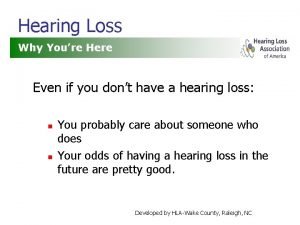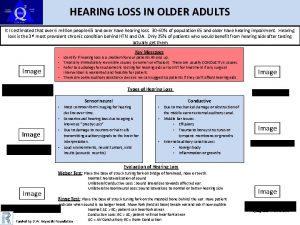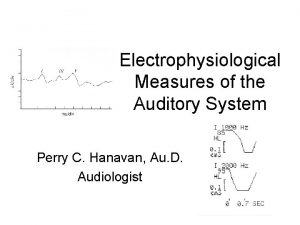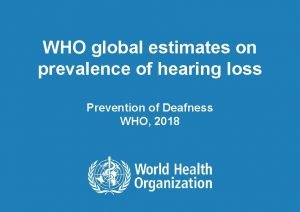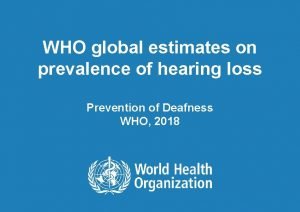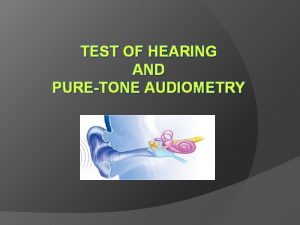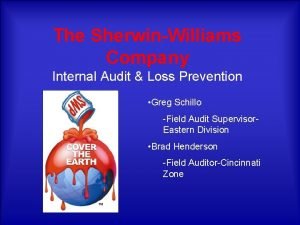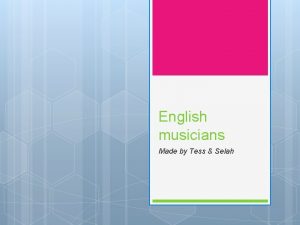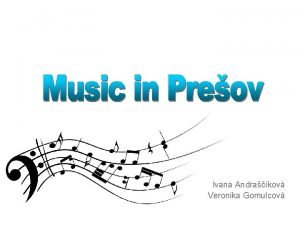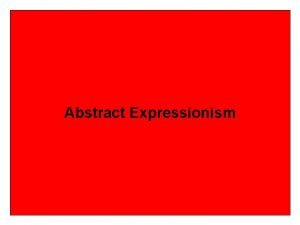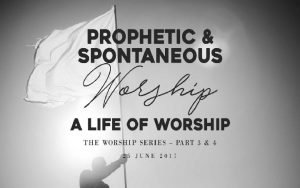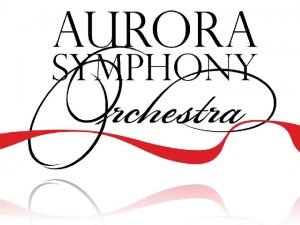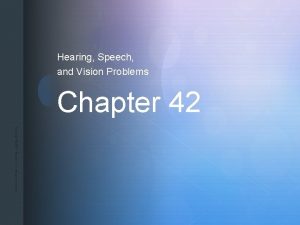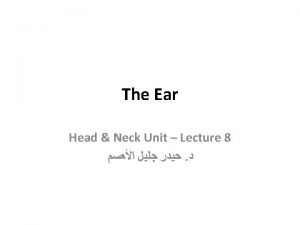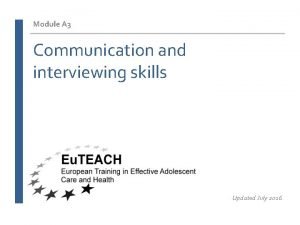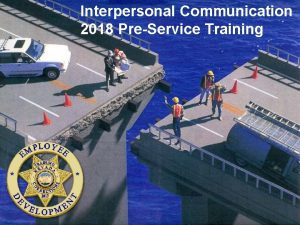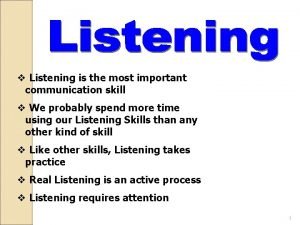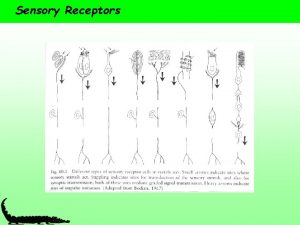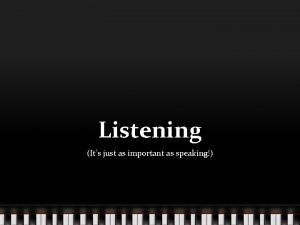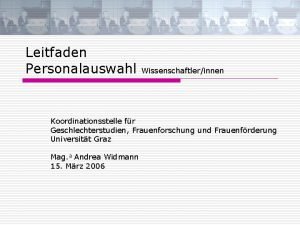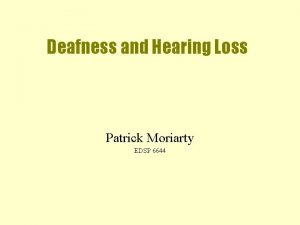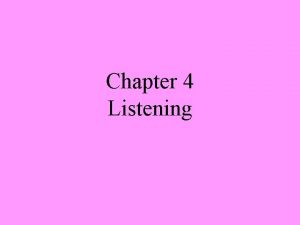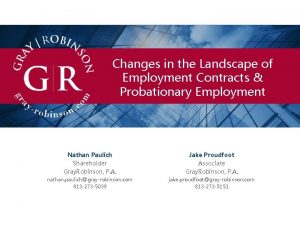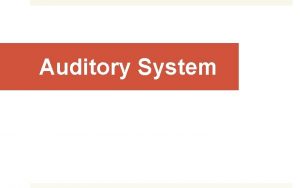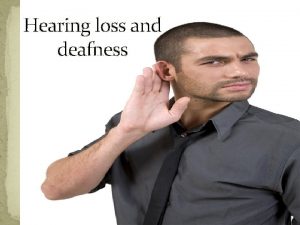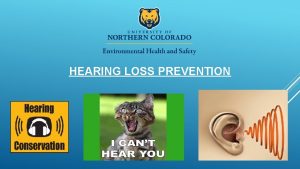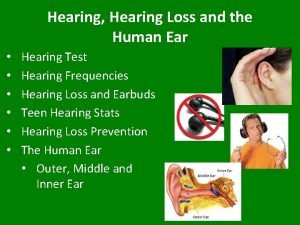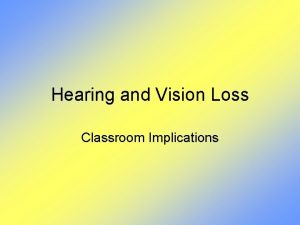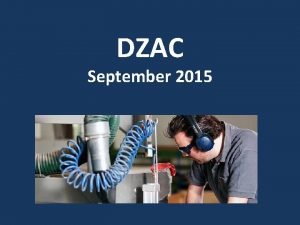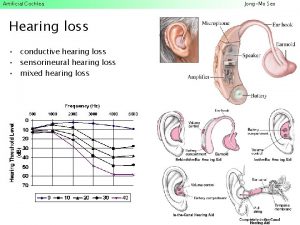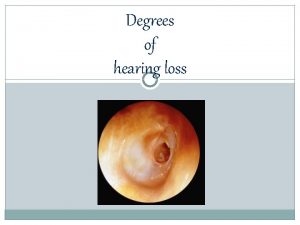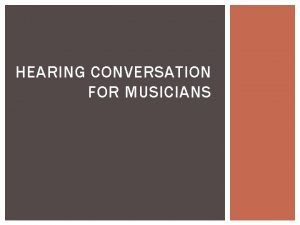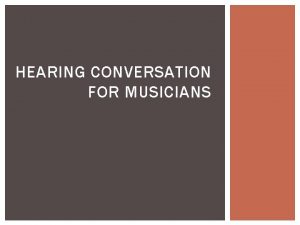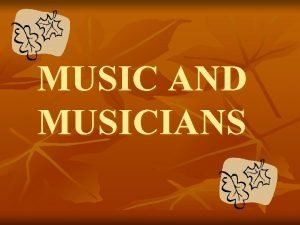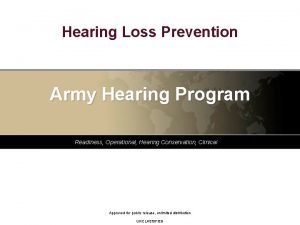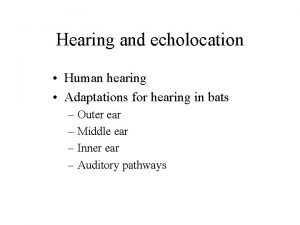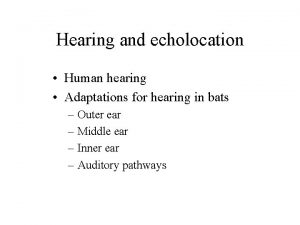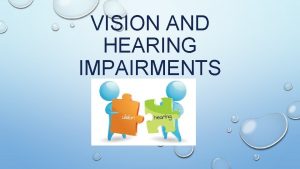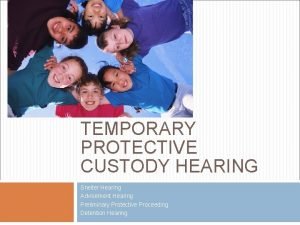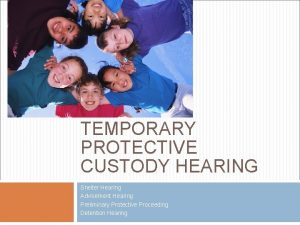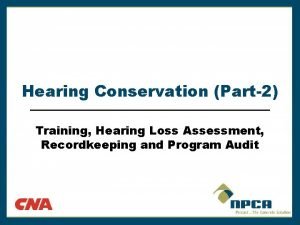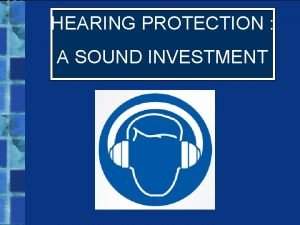Musicians and the Prevention of Hearing Loss Dr

























































































![Loss of Energy for Higher Frequencies at – 45 Degrees (low [red], mid [yellow] Loss of Energy for Higher Frequencies at – 45 Degrees (low [red], mid [yellow]](https://slidetodoc.com/presentation_image_h/d0ad8e8cd75a255ce4aac60fe9fc81df/image-90.jpg)



- Slides: 93

Musicians and the Prevention of Hearing Loss Dr. Marshall Chasin, Au. D, M. Sc. , Reg. CASLPO, Aud(C), Audiologist Musicians’ Clinics of Canada, Marshall. Chasin@rogers. com October 2006

Musicians’ Clinics of Canada

Powerpoints available on … l www. randomizedtimer. net/music

Special issue on musicians l Hearing Review, March 2006 – (guest edited by Marshall Chasin) – www. hearingreview. com


www. musiciansclinics. com Sections on: Hearing loss FAQs Hearing loss prevention articles Summary fact sheets (instruments) Performing arts injuries Links section

Fligor (2003, 2006) l Auditory risk assessment of portable compact disc players: l l On most CD disc players (depending on the type of music and the earphone used), caution should be exercised above volume 5 or 6. One disc player he used (using a vertically oriented earphone) yielded excessive outputs even when as low as volume 3 -4.

Fligor (2006)

CD player with Panasonic Supra aural headphones (Fligor, 2004) Jazz Rap/ R&B Classical Country Pop Adult Dance Peak SPL 110. 8 116. 9 96. 7 120. 7 118. 9 121 111. 6 Avg d. BA 88. 5 98. 6 79. 2 102. 8 97. 9 105. 7 95

The 60/120 ipod Rule The Fligor Rule (2006): Maximum settings to obtain 50% maximum dosage… ipod volume at 60% for 120 minutes l Depends on earphone used l – Some earphones “isolate” the ear. – Some earphones have different electro-acoustic characteristics.


The 60/60 CD Rule l This is appropriate for CD players l These are about 3 d. B more intense than ipods. l “ 60% volume setting for 60 minutes”

Portable music is portable… l The volume control is turned up in the presence of background noise l 50% volume control may be comfortable in quiet, but this same comfortable listening level may be 80% volume in noise.

Portable music is portable… l The “best” headphone is one that isolates you from the environment… l You won’t need to turn up the volume control in a noisy place. l BUT, you also lose warning cues! l BEWARE!!!


Zogby International (March ’ 06) l 69% would turn down the volume l 42% would listen less often l 36% would use special (isolator) earphones

So … l 60/60 rule for CD players l 60/120 rule for ipods l Use isolator earphones l BUT watch out for traffic!

… and another thing… l Use the MP 3 players in both ears. l Some kids use one earphone for them and the other for their friend. l Because of LACK of binaural summation, the volume needs to be 6 d. B more intense… this is equivalent to four times the damage.

Noisy Toys …. - Can potentially cause hearing loss - Acoustic trauma can occur Occurs at or near the peak frequency of the acoustic signal l May or may not be at an audiometric frequency so can easily miss the loss. l

Jansson and Karlsson (1983) Maximum limits for symphony orchestras are achieved at anywhere between 10 and 25 hours per week of playing.

Chasin and Chong (1991) Levels in excess of 85 d. BA were measured even during a relatively quiet etude at Canada’s National Ballet with a peak level of 126 d. BA.

Maximum Levels for Instruments (Wagner Ring Cycle: Camp and Horstman, 1992) Instrument Peak Level (d. B SPL) French Horn 107 Bassoon 102 Trombone 108 Tuba 110 Trumpet 111 Violin 109 Clarinet 108 Percussion >120 (Amplified Guitar >115)

Chasin (2006)

With musicians, hearing loss is not as significant as … l Tinnitus l Pitch perception problems

Two Factors Affecting Hearing Loss Intensity (d. BA) Duration (hours) ……. 3 d. B exchange rate


Lindgren and Axelsson (1983) Temporary threshold shift was equal in 4 out of 10 subjects who were exposed to noise and music of equal energy, but greater for the noise exposure in the other 6 subjects.

Hörmann et al. (1970) Studied the emotional effects on TTS at 4 k. Hz. “reward”group had TTS of 12. 8 d. B “punishment” group had TTS of 18. 1 d. B

Swanson et al. (1987) Studied the effects of liking music on TTS Group 1: Liked pop music Group 2: Disliked pop music TTS (Group 1) < TTS (Group 2)

Liking The Music l Role of efferent pathways – Musicians have greater efferent suppression than non- musicians (Mecheyl et al. , 1995, Perrot et al. , 1999, Brashears et al. , 2003) l Stress resulting in chemical changes in cochlea

Three Factors Affecting Hearing Loss Intensity Duration “Liking the music”

Stapedial Reflex Zakrisson et al. (1980) studied unilateral Bell’s Palsy in humans. TTS was 10 d. B greater in de-innervated ear than normally functioning ear. Borg et al. (1983) surgically cut stapedius muscle unilaterally in rabbits. PTS was 30 d. B greater in operated ear.


Stapedial Reflex and Music is intermittent … allows reflex to “reset”. Industrial noise tends to more steady state and reflex is only useful for first 10 -15 seconds.

Four Factors Affecting Hearing Loss Intensity Duration “Liking the music” Stapedial reflex

Individual Factors Efferent neurological effects (eg. Lonsbury-Martin) – Musicians have greater efferent suppression than non-musicians (Mecheyl et al. , 1995, Perrot et al. , 1999, Brashears et al. , 2003) l Inaccurate patient noise exposure history l Genetic predisposition (eg. Kujawa) l Differing bio-chemical cochlear content – Individual factors – Environmental contributions (eg. Ototoxicity) – Availability of oxygen to cochlea

Effects of Physical Fitness at 4 k. Hz (Alessio et al. , 2002) Age/Fitness Low Medium High Teens 2. 0 2. 2 0. 75 50 -60 13. 5 11. 3 13. 0 60 -80 34. 5 21. 2 14. 2

Five Factors Affecting Hearing Loss l Intensity l Duration l “Liking the music” l Stapedial reflex l (Individual factors)

… Musicians are “slightly” less prone to hearing loss than workers … Limited duration each week Liking the music Stapedial reflex Intermittent nature of the music Effective quiet (critical levels)

Estimates of Effective Quiet (E. Quiet) Freq. (Hz) 250 E. Quiet (d. BA) 77 Clarinet Violin (d. BA) 72 -82 75 -84 Trumpet (d. BA) 75 -98 500 75 -85 73 -84 75 -87 76 -98 1000 81 -82 69 -81 71 -78 70 -87 2000 77 -78 66 -74 70 -74 66 -77 4000 74 -76 56 -62 59 -65 60 -67

Effective Quiet (note similarity to music spectrum vs. noise!)

Rockers less prone to hearing loss!!! Hart et al. (1987)…. Only 30% of rockers had hearing loss. vs. Royster et al. (1991) …. 52% for classical music. 1. Rockers only are subjected to loud music for several hours per week. 2. Enjoyment of music 3. Stapedial reflex (sings along? )

How I Assess a Musician Routine audiometry (pure tones, speech testing and impedance). If asymmetries, then ABR/MRI - explained (eg. Violins, drummers) - unexplained (eg. unrecalled acoustic traumas, neuromas) Otoacoustic emission testing Real Ear Measurement of their instrument

Audiometric Asymmetries l Industrial exposure is (usually) symmetrical – Highly reverberant locations – Predominantly low-frequency noise l Music exposure can be asymmetrical – Low reverberant locations – Significant mid- and high-frequency music energy l Head and body shadow effects

Otoacoustic Emissions (Drummer - symmetrical “hearing”)

Otoacoustic Emissions (Lead singer moved away from drummer)

OAE “notch” at 5000 Hz and not measured on audiometry. . .

AAA poster session on OAEs l Lisa Battani, “Effects of cigarette smoking on DPOAE” – Greater effect (reduction) seen in higher frequencies. l Vascular? Ototoxicity?

Real Ear Measurement REM is modified to assess “external” stimuli Disable the reference microphone and disable the speaker eg. Audioscan: “stimulus level = 0 d. B” Frye: “stimulus off” Perform a sweep with a low-frequency, a mid-frequency, and a high-frequency sound at quiet, medium, and loud levels.


Real Ear Measurement l RECALL… Unlike noise, music has significant mid- and high-frequency energy. l REM can (should) be performed at TM to take advantage of ear canal resonances. – Music enhanced by 17 d. B at 3 k. Hz over sound field. – Industrial noise is not enhanced in this region (except impulse noise).

What to do with the information? The REM data will provide information on the relative contribution of noise exposure from that instrument. Draw a picture of the noise environment, to see who else can be the culprit (eg. Drummer to the rear? )

Hearing Protection Alternatives ER-15: (1988+, Etymotic Research) Custom made uniform attenuator provides 15 d. B of attenuation up to 8000 Hz. It uses an element that interacts with an inductance to provide a 3000 Hz resonance, thus off-setting the loss of the ear canal resonance. ER-25: (1992+) Custom made uniform attenuator provides 25 d. B of attenuation up to 6000 Hz.

Hearing Protection Alternatives ER-15 SP: Similar to ER-15 but LESS attenuation above 4000 Hz. ER-9: Custom made uniform attenuator provides 9 d. B of attenuation. ER-20: ( HI-FI) Non-custom earplug with a slight high-frequency roll-off. Costs about $10 -$12.

Hearing Protection Alternatives Vented/tuned earplugs: Similar to filtered earplugs, except uses a SAV down the main sound bore. In its most open position is acoustically transparent below 1500 Hz…. almost….

Other Hearing Protection Alternatives l Other alternatives exist: – Bilsom “Natural Sound Technology” (NST) – (Digital) signal processing approaches – Other vented/tuned approaches l l Variable venting schemes Variable (acoustic) filtering schemes



Earplugs and Auditory Danger Instrument Danger Earplug Violin/Viola ER-15 Woodwinds Percussion ER-15/ vented-tuned Brass/Percussion ER-15 Percussion ER-25 Amplified Instruments Loudspeakers/ Drums ER-15

Verifying Attenuation l Real Ear Measurement – REUR - REOR (“unaided” – “aided”) – Perform at 70 d. B or greater l Functional attenuation – Threshold with hearing protector in place – “unaided” – 2 d. B steps (standard error = 2. 8 d. B) l Covering the “opening” of the hearing protector – subjective

14 Year Follow-up for ER-Earplugs Survey of 850 earplug recommendations: 1990: 32% decided to get them 1995: 64% decided to get them 1997: 72% decided to get them 2005: 94% decided to get them

Follow-up for ER-Earplugs Survey of 425 users: 83% still wearing them 14% changed to a different type (usually less) 3% did not like them (usually French Horn players)

Vented/tuned earplugs Resonant Frequency α area Lo. Ve Improved vocal awareness as frequency of the vent resonance is decreased. (decrease area and increase L)

Vented/tuned earplugs

The wrong hearing protection can be worse than none at all… A 25 year old drummer read that he needed to use earplugs. He started using industrial strength earplugs and 6 months later noted wrist and arm problems.

The wrong hearing protection can be worse than none at all… No hearing protection 103 d. B SPL “Industrial” protection 113 d. B SPL ER-25 (proper protection) 104 d. B SPL

The wrong hearing protection can be worse than none at all… With the ER-25, wrist and arm strain was reduced EMG activity returned to normal Improved monitoring was the key

A Study of Conventional Earplugs with Brass Musicians (Smith and Thelin, 2003) l With conventional foam earplugs, the playing level of brass players increased by 2. 2 d. B. – Decreased monitoring ability – Decreased sound quality because of high- frequency loss.

Acoustic Monitor Useful for bass string instruments such as the cello and acoustic bass. Four feet of #13 hearing aid tubing with an adaptor. One end plugs in to the left Vented/tuned earplug and the other is inserted in the “ƒ”-hole of the cello or bass. Similar to an acoustic stethoscope (only less than $10 in parts!)

Acoustic Monitor

Bass Shakers

Baffles have limited usefulness unless they are within 7 inches of the ear with optimal attenuations being 15 -17 d. B in the higher frequencies. (Camp and Horstman, 1992)

Attenuation from Baffles

In-The-Ear Monitors These are either: Custom (Futuresonics, Sensaphonics, Westone, Ultimate Ear …) Or Non-custom (ER-4, ER-6, Shure, Sennheiser …)


In-The-Ear Monitors (in situ)

In-The-Ear Monitors (transceiver) l Transceivers: – Sennheiser – Shure

Intensity vs. Loudness l Our role as hearing health care professionals is to “delude” the musician into thinking that the music is sufficiently loud, but at a lower intensity level.

The Zen Of Hearing Loss Prevention “Maintenance of loudness with reduction of intensity”

The Mantra…. Improved monitoring - Bass increase - Shakers (ultra-low frequency woofers) - In-the-ear monitors - Acoustic monitors

The Big Four … l Moderation l Humming l Improved monitoring l Environmental strategies

Four Expedient Environmental Techniques to Reduce Noise/Music Exposure

1. Speaker/amplifier combinations should be elevated from the floor.

Energy Loss with Loudspeaker in Contact with Floor

2. Strings should always have at least two meters of unobstructed space above them.

High Frequency Loss with a Poorly Constructed Pit Overhang

3. Two meters of unobstructed floor space in front of the orchestra.

Two Meters of Unobstructed Floor Space in Front of Orchestra

4. Treble brass instruments should be on risers.
![Loss of Energy for Higher Frequencies at 45 Degrees low red mid yellow Loss of Energy for Higher Frequencies at – 45 Degrees (low [red], mid [yellow]](https://slidetodoc.com/presentation_image_h/d0ad8e8cd75a255ce4aac60fe9fc81df/image-90.jpg)
Loss of Energy for Higher Frequencies at – 45 Degrees (low [red], mid [yellow] and high [green] frequency)

Why do you instantly dislike trumpet players?

Because it saves time…

Marshall. Chasin@rogers. com www. musiciansclinics. com
 Primary prevention secondary prevention tertiary prevention
Primary prevention secondary prevention tertiary prevention Icd-10 hearing loss
Icd-10 hearing loss Cookie bite hearing loss
Cookie bite hearing loss Conductive hearing loss lateralization
Conductive hearing loss lateralization Tympanometry types
Tympanometry types Rinne weber schwabach test
Rinne weber schwabach test Who global estimates on prevalence of hearing loss 2020
Who global estimates on prevalence of hearing loss 2020 Who global estimates on prevalence of hearing loss 2020
Who global estimates on prevalence of hearing loss 2020 How to perform rinne test
How to perform rinne test Loss prevention and security in hotels
Loss prevention and security in hotels Unit cost meaning
Unit cost meaning Sherwin williams loss prevention
Sherwin williams loss prevention Cfi loss prevention
Cfi loss prevention Opera is an art form in which singers and musicians
Opera is an art form in which singers and musicians Musicians union legal advice
Musicians union legal advice Italian musicians
Italian musicians Romare bearden three folk musicians
Romare bearden three folk musicians What are these people doing?
What are these people doing? Three musicians, pablo picasso, 1921
Three musicians, pablo picasso, 1921 English musicians
English musicians Sculptures of musicians
Sculptures of musicians Veronika husovská musician
Veronika husovská musician Romare bearden three folk musicians
Romare bearden three folk musicians Worship musicians
Worship musicians Aso musicians
Aso musicians Musicians who died from alcohol
Musicians who died from alcohol Chapter 42 hearing speech and vision problems
Chapter 42 hearing speech and vision problems Hearing and equilibrium
Hearing and equilibrium Middle ear
Middle ear Sight hearing taste smell and touch
Sight hearing taste smell and touch Family
Family Proxemics in communication skills
Proxemics in communication skills Hku speech and hearing
Hku speech and hearing Hát kết hợp bộ gõ cơ thể
Hát kết hợp bộ gõ cơ thể Ng-html
Ng-html Bổ thể
Bổ thể Tỉ lệ cơ thể trẻ em
Tỉ lệ cơ thể trẻ em Gấu đi như thế nào
Gấu đi như thế nào Glasgow thang điểm
Glasgow thang điểm Hát lên người ơi alleluia
Hát lên người ơi alleluia Kể tên các môn thể thao
Kể tên các môn thể thao Thế nào là hệ số cao nhất
Thế nào là hệ số cao nhất Các châu lục và đại dương trên thế giới
Các châu lục và đại dương trên thế giới Công của trọng lực
Công của trọng lực Trời xanh đây là của chúng ta thể thơ
Trời xanh đây là của chúng ta thể thơ Mật thư anh em như thể tay chân
Mật thư anh em như thể tay chân 101012 bằng
101012 bằng độ dài liên kết
độ dài liên kết Các châu lục và đại dương trên thế giới
Các châu lục và đại dương trên thế giới Thơ thất ngôn tứ tuyệt đường luật
Thơ thất ngôn tứ tuyệt đường luật Quá trình desamine hóa có thể tạo ra
Quá trình desamine hóa có thể tạo ra Một số thể thơ truyền thống
Một số thể thơ truyền thống Cái miệng nó xinh thế
Cái miệng nó xinh thế Vẽ hình chiếu vuông góc của vật thể sau
Vẽ hình chiếu vuông góc của vật thể sau Nguyên nhân của sự mỏi cơ sinh 8
Nguyên nhân của sự mỏi cơ sinh 8 đặc điểm cơ thể của người tối cổ
đặc điểm cơ thể của người tối cổ Thế nào là giọng cùng tên?
Thế nào là giọng cùng tên? Vẽ hình chiếu đứng bằng cạnh của vật thể
Vẽ hình chiếu đứng bằng cạnh của vật thể Vẽ hình chiếu vuông góc của vật thể sau
Vẽ hình chiếu vuông góc của vật thể sau Thẻ vin
Thẻ vin đại từ thay thế
đại từ thay thế điện thế nghỉ
điện thế nghỉ Tư thế ngồi viết
Tư thế ngồi viết Diễn thế sinh thái là
Diễn thế sinh thái là Dạng đột biến một nhiễm là
Dạng đột biến một nhiễm là Bảng số nguyên tố
Bảng số nguyên tố Tư thế ngồi viết
Tư thế ngồi viết Lời thề hippocrates
Lời thề hippocrates Thiếu nhi thế giới liên hoan
Thiếu nhi thế giới liên hoan ưu thế lai là gì
ưu thế lai là gì Sự nuôi và dạy con của hổ
Sự nuôi và dạy con của hổ Khi nào hổ mẹ dạy hổ con săn mồi
Khi nào hổ mẹ dạy hổ con săn mồi Sơ đồ cơ thể người
Sơ đồ cơ thể người Từ ngữ thể hiện lòng nhân hậu
Từ ngữ thể hiện lòng nhân hậu Thế nào là mạng điện lắp đặt kiểu nổi
Thế nào là mạng điện lắp đặt kiểu nổi Insensitive listening
Insensitive listening Types of barriers
Types of barriers We listen
We listen Classification of sensory receptors
Classification of sensory receptors What causes lady montague’s death
What causes lady montague’s death Hearing on advisement
Hearing on advisement Listening vs hearing
Listening vs hearing Hearing personalauswahl
Hearing personalauswahl Asl if only i could fly
Asl if only i could fly Safetymri
Safetymri Hearing vs listening
Hearing vs listening Education workforce council
Education workforce council Noah hearing aid
Noah hearing aid Hearing impairment meaning
Hearing impairment meaning Active listening vs hearing
Active listening vs hearing Listening vs hearing
Listening vs hearing Loudermill hearing
Loudermill hearing Public hearing for environmental clearance
Public hearing for environmental clearance Hearing neural pathway
Hearing neural pathway


